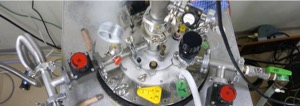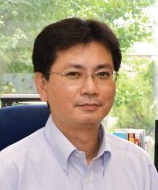
Magnetism and Magnetoscience Laboratory,
Department of Physics, Faculty of Science, Kagoshima University
Keiichi KOYAMA, Ph.D.
Professor
Work experience
1997-1998:Postdoc, Institute for Solid State Physics, University of Tokyo, Japan
1998-2001:Research Associate, Institute for Materials Research, Tohoku University, Japan
2001-2009:Associate Professor, Institute for Materials Research, Tohoku University, Japan
2010-present:Professor, Graduate School of Science and Engineering, Kagoshima University, Japan
CONTACT
Graduate School of Science and Engineering
Kagoshima University
1-21-35, Korimoto, Kagoshima, 890-0065, JAPAN
TEL&FAX: +81-99-285-8070
Welcome
This laboratory was established in January 2010 at Kagoshima University in order to study basic magnetism and magnetoscience. The instruments of the laboratory will be superconducting magnets, a electron spin resonance system, DSC&DTA-thermal analysis, high pressure equipments, a extraction-type magnetometer, arc-furnace, etc. Four master course students and three undergraduate students study in this laboratory.



Education
I expect fulfilling research life to students desiring to join this laboratory!



Keywords
High magnetic field, Field induced structural transformation, High field x-ray diffraction, High pressure magnetization measurements, Ferromagnetic shape memory alloys, Magnetic refrigerant, Magnetocaloric effect, Martensitic transformation, large magnetoresistance of magnetic Heusler alloy, Field-induced first-order ferromagnetic transitions, Magnetic phase transition, Antiferromagnetic resonance, Cyclotron resonance, Magnetic resonance, Magneto science, High field magnet technology,
The topics studed in the resent research
(1) High field X-ray diffraction studies of new high performance magnetic materials.
(2) Experimental studies of strongly correlated electron system, itinerant electron weak ferromagnets, under high magnetic fields, high pressure.
(3) Thermal analysis of magnetic materials under high magnetic fields.
Research interests
Magnetism, Physics under extreme conditions, Magnetic and cycrotron resonance, high field X-ray diffraction, Magnetic field effect






